In the car hub, transmission, differential are used in a variety of bearings, such as ball bearings, needle roller bearings, tapered roller bearings, linear bearings, plain bearings, the amount of each car as many as dozens, in recent years, the rapid development of automotive technology and environmental protection pressure requirements, low fuel consumption of cars and cars of the long quality assurance trend, Automobile bearings are also facing the problem of unprecedented lightweight and long life.
Bearing life, according to Lundbber and Palmgren's theory, can calculate the theoretical life. But in fact, in the use of cars, transmission, differential oil mixed with foreign bodies, installation method selection, and high temperature generated by high-speed operation, so that the actual life of the bearing is shorter than the theoretical calculation value, so the study of bearing failure mode, analysis of the formation of factors and prevention is particularly important.
Failure mode and cause analysis of bearing:
1. Failure mode of bearing
1.1 Peeling
The main performance: when the bearing is under rotating load, the raceway of the inner ring and the outer ring or the surface of the rolling body show fish-scale peeling phenomenon due to rolling fatigue.
Cause: Due to the effect of alternating stress on the working surface and failure, mainly occurring on the bearing working surface, often accompanied by cracks, first from the contact surface below the maximum alternating shear stress, and then extended to the surface to form different spalling shapes, such as pitting or pitting spalling, spalling into a small flake called shallow spalling. Due to the gradual expansion of the spalling surface, and often to the deep expansion, the formation of deep spalling.
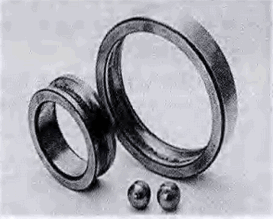
1.2 Creep
When there is a clearance between the mating surfaces of bearings, relative sliding occurs between the mating surfaces, and the mating surfaces where creep occurs show bright mirror or dark surface, sometimes accompanied by stuck wear.
The relative sliding friction between the working surfaces of bearings leads to the failure of the metal on the working surface which is constantly worn. Continuous wear will cause gradual damage to bearing parts, and eventually lead to loss of bearing dimensional accuracy and other related problems. Wear affects the increase of fit clearance and the change of working surface topography, which may cause the lubricant or its pollution to reach a certain extent and the lubrication function will be completely lost, and then the bearing will lose the rotation accuracy or even cannot operate normally. Wear failure is one of the common failure modes of all kinds of bearings, which can be divided into the most common abrasive wear and adhesive wear according to the wear form.
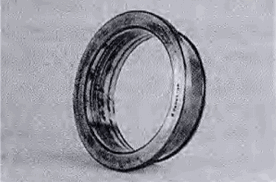
1.3 Strain
The surface damage caused by minor burns on the working face of the bearing and the surface of the rolling body is manifested as linear scratches on the surface of the slide surface and raceway body in the circumferential direction.
The wear caused by the grinding of external hard particles or hard foreign bodies or metal surfaces and the relative movement of the contact surface is often caused by furrow scratches on the bearing working surface.
1.4 Stick
The transfer of material from one working surface to another is accompanied by frictional heating and sometimes by surface tempering or re-quenching. This process creates local stress concentrations in the contact area and may lead to cracking or spalling.
Due to the uneven stress on the working face caused by the micro-convex or foreign matter on the working face, when the lubrication is seriously deteriorated, the local friction heat is generated, which is easy to cause the local deformation of the working face and friction microwelding phenomenon. In serious cases, the metal on the working face may be locally melted, and the contact surface forces will tear the local friction welding points from the matrix and increase the plastic deformation. This cycle of sticking, tearing, sticking, slight sticking wear is called abrasions, and severe sticking wear is called occlusion.
1.5 Fracture
The fracture failure of bearing ring is rare and is usually caused by sudden overload. The main reasons for bearing fracture failure are defects and overload factors, such as raw material defects of bearings (bubbles, shrinkage holes), forging defects (overburning), heat treatment defects (overheating), processing defects (local burns or surface micro-cracks), main engine defects (poor installation, poor lubrication), etc. When the external load exceeds the strength limit of the material and the parts fracture is called overload fracture, once the overload impact load or violent vibration may make the ring fracture. But generally speaking, the most common bearing fracture failure is overload fracture.
1.6 Electric Corrosion
Refers to the bearing in the process of operation, the current through the bearing body, in the bearing inner and outer ring working face and rolling body working face due to spark discharge caused by melting of the working face, and rough discoloration corrosion.
When the current flows in the contact part of the circulating rotating bearing raceway wheel and the rolling body, sparks occur through the thin lubricating oil film, causing local melting and concave-convex phenomenon on the surface.
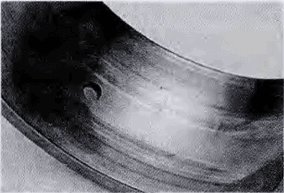
1.7 Hydrogen embrittlement
Refers to the bearing in the process of operation, between the bearing inside and outside raceway and rolling body to generate positive and negative electric fields, so that water molecules ionize, penetrate to the raceway surface, raceway working surface hydrogen evolution cracks, and then spallation.
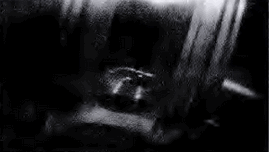
The rolling body and the inner and outer rings will generate static electricity during operation. The bearing assumes the role of the iron wire in the overall structure of the vehicle, which causes the rolling body to be positively charged, and the inner and outer rings to be negatively charged, generating electric fields, and the rolling body to produce microscopic chemical reactions with the raceway of the inner and outer rings. The water in the grease or the external environment is electrolyzed with positively charged hydrogen ions. Under the action of electric field, hydrogen ions adsorb the surface layer of the inner and outer raceway under the action of negative charge of the inner and outer raceway. With the increase of hydrogen ion concentration, hydrogen ions penetrate the surface layer of the raceway and enter the sub-surface layer. In this way, the stable structure between atoms in the surface layer is destroyed, resulting in tiny cracks. Especially in the bearing area of delicate raceway, due to the influence of shear stress and high temperature, it is most easy to produce hydrogen embrittlement and make the bearing area of raceway spalling.
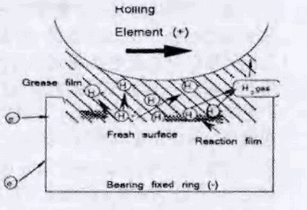
2. Prevention of bearing failure
Bearing failure is often caused by a variety of factors, all influencing factors in the design and manufacturing process may cause bearing failure, so it is not easy to judge. In general, from the use of factors and internal factors two aspects of consideration and analysis.
2.1 Internal factors mainly refer to the three factors that determine bearing quality, such as structural design, manufacturing process and material quality
First of all, the structure should be advanced at the same time of reasonable design, so as to achieve a longer bearing life.
Design factors are the key factors affecting the life of bearings, strictly according to the bearing load, speed, and other conditions to design a reasonable structure form, reasonable precision and clearance selection requirements. Design to put forward a clear installation, use, maintenance of technical requirements for later maintenance.
The manufacturing process of the second bearing should go through forging, heat treatment, turning, grinding and assembly and other processing procedures. In addition, the technical level, rationality, advancement and stability of the process of each process will also affect the bearing life. Among them, heat treatment and grinding process, which affect the quality of finished bearings, are often more directly related to the failure of bearings. The microscopic analysis of the metamorphic layer of the bearing working surface shows that the grinding process is closely related to the quality of the bearing surface.
The third bearing material is also the main factor affecting the early failure of bearings. With the continuous development of new bearing materials, the selection range of bearing materials is becoming wider and wider. It is very important to select suitable materials according to the design requirements and the environmental requirements of use.
2.2 Usage factors mainly refer to whether installation, adjustment, use and maintenance meet technical requirements
Installation conditions are one of the primary factors in the use of the bearing, often due to inappropriate installation of bearings, resulting in changes in the stress state between the parts of the whole set of bearings, so that the bearing in the abnormal state of operation and early failure. According to the technical requirements of bearing installation, use, maintenance and maintenance, check the load, speed, working temperature, vibration, noise and lubrication conditions of bearings in operation, and find out the cause immediately if any abnormality is found. In addition, it is also important to choose the right grease.
3.Conclusion
This paper discusses the common failure mode and failure mechanism of automobile bearings. Although bearings are precise and reliable mechanism foundation, improper use, lubrication, disassembly and assembly can also cause failure. In general, if bearings can be used correctly, they can be used until fatigue life. The early failure of bearings is mainly caused by the manufacturing accuracy, installation quality, service conditions, lubrication effect, external foreign body intrusion and other factors of the matching parts of the shaft and bearing seat. Therefore, the correct and reasonable use of bearings is a systematic engineering. In the process of bearing structure design, manufacturing and installation, appropriate measures can be taken for the early failure of the link, which can effectively improve the service life of bearings and assembly parts, reduce the user's use cost and improve user satisfaction.
2023-01-09